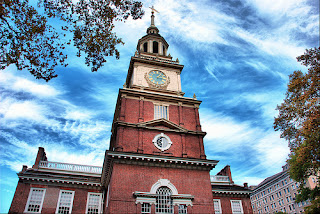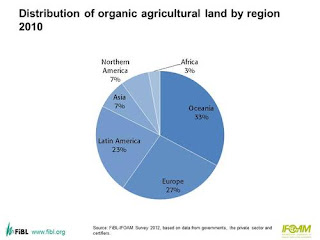Saturday, December 15, 2012
Tuesday, December 11, 2012
Cities and sustainable development (eco-cities)
- Urban growth and spread
- Socio-spatial inequalities
- Transport and mobility
- Planning “sustainable” urban areas (eco-cities)
Sunday, November 4, 2012
Wednesday, October 17, 2012
Sunday, October 14, 2012
FAO World Food Day
World Food Day Website
World hunger overestimated...
FAO infographic on world hunger
World hunger overestimated...
FAO infographic on world hunger
What is the FAO?
What is the purpose of World Food Day?
Can you think of a way you could celebrate WFD in your school?
Sunday, September 30, 2012
Monday, August 27, 2012
Sunday, August 26, 2012
Thursday, August 9, 2012
Saturday, August 4, 2012
Stephen Emmott's views on human population
Emmott
is a professor of
computing at Oxford University and head of Microsoft's Computational
Science Laboratory in Cambridge. His lab is devoted to finding new
techniques and ideas for solving key scientific problems. One of his
research groups works on small-scale issues including the make-up of
living cells and includes immunologists and neuroscientists. Another
group is focused on global problems including the carbon cycle and is
made up of plant biologists and marine ecologists.
The
global population
was 1 billion in 1800 and 4 billion in 1980.
It
will probably have grown to 10 billion by the end of this century.
The
demand for food
will have doubled by 2050.
Food
production already accounts for 30% of greenhouse gases – more than
manufacturing or transport.
More
food needs more land, especially when the food is meat.
More
fields mean fewer forests, which means even more carbon dioxide in
the atmosphere, which means an even less stable climate, which means
less reliable agriculture – witness the present grain crisis in the
US.
It
takes 3,000 litres of water to make a burger (the UK eats 10bn
burgers a year).
A
world population of 10 billion will need 960 new dams, each of them
the size of the world's largest in China's
Three Gorges, plus 15,000 nuclear power stations and/or 11m wind
farms.
The
great objective of intergovernmental action, such as it is, has been
to restrict the rise in average global temperature to no more than
2C, but a growing body of research suggests a warming by 6C is
becoming more and more likely.
The
world will become "a complete hellhole" riven by conflict,
famine, flood and drought.
Go
to a climate
change conference these days, and, as well as all the traditional
attendees, there will usually be a small detachment of the
forward-looking military.
What's
to be done?
Emmott
takes us through the ideas offered by "the rational optimists"
who believe that, faced with the species' near extinction, human
inventiveness will engineer a solution.
Desalination
plants, a new green revolution, seeding the oceans with iron filings
to absorb more CO2: all of these threaten to produce as many problems
as they solve.
He
believes the only answer is behavioural change.
We
need to have far fewer children and consume less.
How
much less?
A
lot less; two sheets of toilet paper rather than three, a Prius
instead of a Range Rover – that kind of sacrifice won't really do
it.
And
does he believe we're capable of making this necessarily far bigger
curb on our desires?
Not
really.
He
describes himself as a rational pessimist.
If
a large asteroid were on course to the Earth and we knew when and
where it would hit – say France in 2022 – then every government
would marshal its scientific resources to find ways of altering the
asteroid's path or mitigating its damage.
But
there is no asteroid.
The
problem is us.
Recently
he asked one of his younger academic colleagues what he thought could
be done.
"Teach
my son how to use a gun," said the colleague.
Text adapted from theguardian
Questions
Does Emmott think
the world is overpopulated?
Who are the
"rational optimists"
Emmott castigates?
Is
there a solution to overpopulation according to Emmott?
Friday, August 3, 2012
United States immigration 1821-2001
| Decade | Number of Immigrants |
| 1821-1830 | 143,439 |
| 1831-1840 | 599,125 |
| 1841-1850 | 1,713,251 |
| 1851-1860 | 2,598,214 |
| 1861-1870 | 2,314,824 |
| 1871-1880 | 2,812,191 |
| 1881-1890 | 5,246,613 |
| 1891-1900 | 3,687,564 |
| 1901-1910 | 8,795,386 |
| 1911-1920 | 5,735,811 |
| 1921-1930 | 4,107,209 |
| 1931-1940 | 528,431 |
| 1941-1950 | 1,035,039 |
| 1951-1960 | 2,515,479 |
| 1961-1970 | 3,321,677 |
| 1971-1980 | 4,493,314 |
| 1981-1990 | 7,338,062 |
| 1991-2000 | 1 9,095,417 |
| Source: 2001 Statistical Yearbook of the Immigration and Naturalization Service | |
Monday, July 30, 2012
Sunday, July 29, 2012
Monday, July 16, 2012
The indentured labour scheme
Indentured Indian labourers at Spring
Garden Buildings. Jamaica, 1880 (National Archives)
Saturday, July 14, 2012
Wednesday, July 11, 2012
Tuesday, July 10, 2012
Friday, July 6, 2012
Thursday, July 5, 2012
Programme DNL Histoire-Géographie de la section européenne
En Section Européenne anglais, la DNL (discipline non linguistique) est l'Histoire-Géographie.
Un thème en HISTOIRE et deux thèmes en GÉOGRAPHIE sont traités. D'autres thèmes du programme Histoire-Géographie de seconde peuvent aussi être abordés.
HISTOIRE
La place des populations
de l’Europe dans le peuplement de la terre:
- Les populations de
l’Europe dans les grandes phases de la croissance de la population mondiale et du peuplement
de la terre, de l’Antiquité au XIXe siècle;
- L’émigration des
Européens vers d’autres continents, au cours du XIXe siècle : une
étude au choix d’une
émigration de ce type en relation avec l’aire de civilisation anglo-saxonne.
GÉOGRAPHIE
1) Nourrir les hommes :
- Croissance des
populations, croissance des productions
- Assurer la sécurité
alimentaire
- Développer des
agricultures durables
2) Villes et développement
durable:
- Croissance urbaine,
étalement urbain, inégalités socio-spatiales
- Transport et mobilités
- Aménager des villes «
durables »
Oral presentations marking criteria
Quality of your text (5 points) Is it your own work?
Quality of the English of your text (5 points) Have you made any English mistakes?
Precision, wealth of vocabulary and
expressions, right level for audience (not too simple or difficult), appropriate style, etc.
Clarity (5 points) Do we understand everything you say?
Communication skills (5 points) How convincing are you?
Body language (the speaker looks at all the members of the audience,
smiles at the appropriate moments, shows self-confidence, is convincing, is not "nervous" or fidgity, does not "move about" needlessly, uses appropriate gestures at the appropriate time), appropriate expression of emotion (sincerity, indignation, etc. in words, voice and gestures), makes good use of Powerpoint/documents, respects timing, dresses appropriately.
Wednesday, July 4, 2012
Demographic growth
Demographic growth is the increase in the size of a population due to there being more births than deaths (a positive natural balance) and more migrants entering than leaving.
The population of the world is growing by 2.7 people per second (two people die per second). 95% of this growth is in the less developed world.
Today, approximately one in three people are under fifteen, which has huge implications for future population growth.
Thursday, June 28, 2012
Wednesday, June 20, 2012
Tuesday, June 19, 2012
Sunday, June 17, 2012
Thursday, March 22, 2012
The 2012 London Olympic Games... sustainable?
London is the only city to have hosted the Olympic Games to have taken into account sustainable development from the beginning of planning. The
town is conscious of what they have to do as regards the environment and
people...
Before hosting the Games, London has undertaken to do the following things:
- use existing sites in the United-Kingdom when it's possible,
- only build new structures that will be useful after the Games,
- build temporary structures in all other cases.
Their approach is to use available resources rather than overuse them.
There are five key areas : climate change, waste management, biodiversity, i
London's
purpose is to make the Games a means of improving the quality of life in the South East of London and in the whole of England.
Monday, March 19, 2012
Friday, March 16, 2012
Thursday, March 15, 2012
Tuesday, February 28, 2012
Monday, February 27, 2012
Wednesday, February 22, 2012
The United Nations Climate Change Conference, Durban 2011
Tuesday, February 21, 2012
Subscribe to:
Comments (Atom)

















































